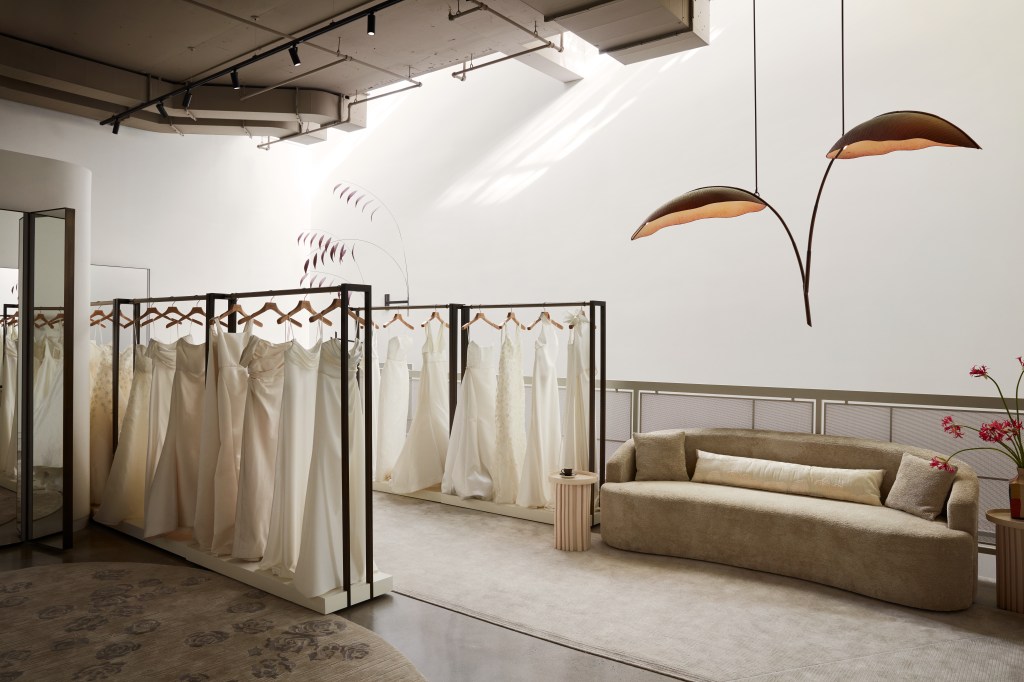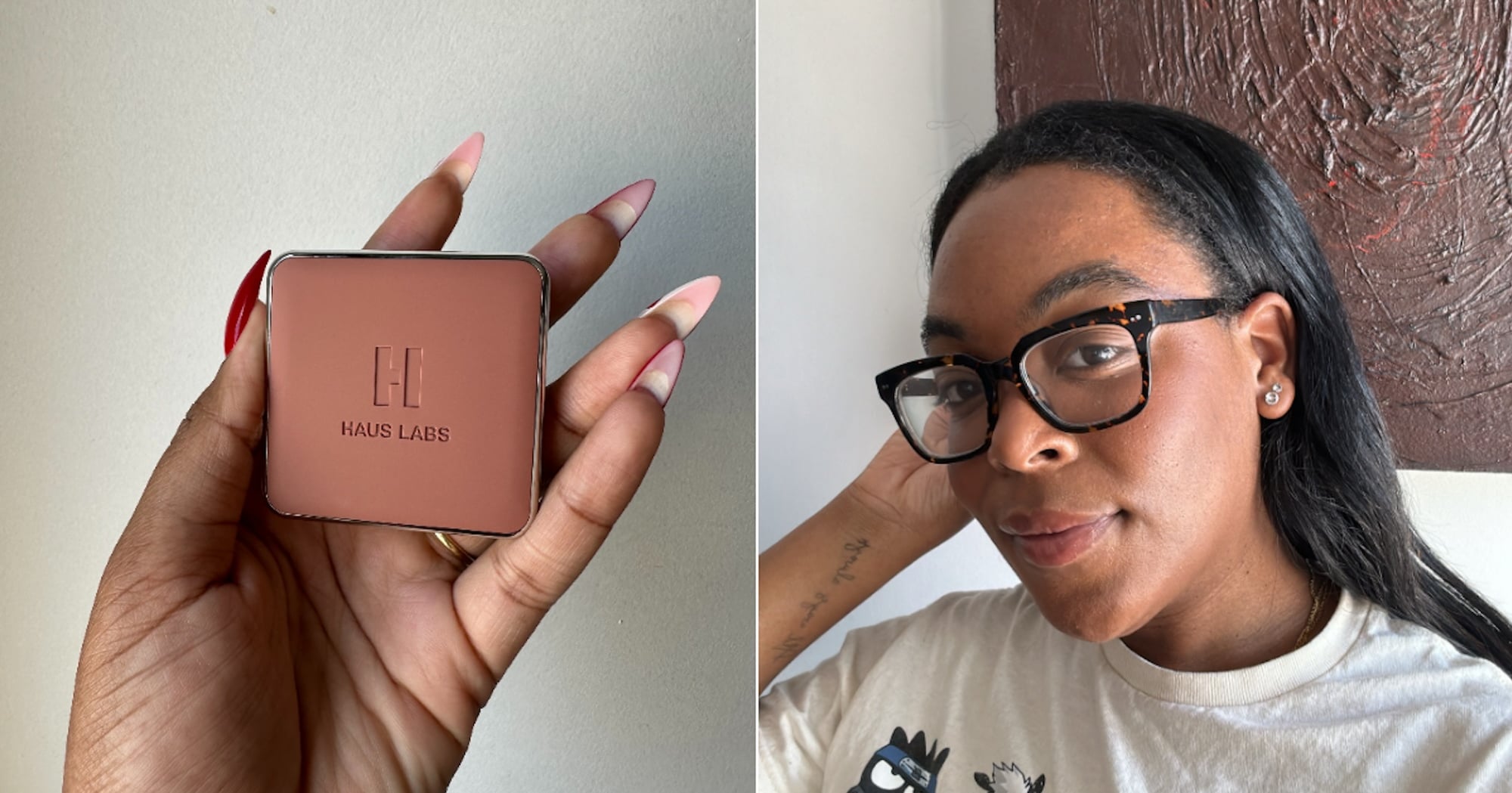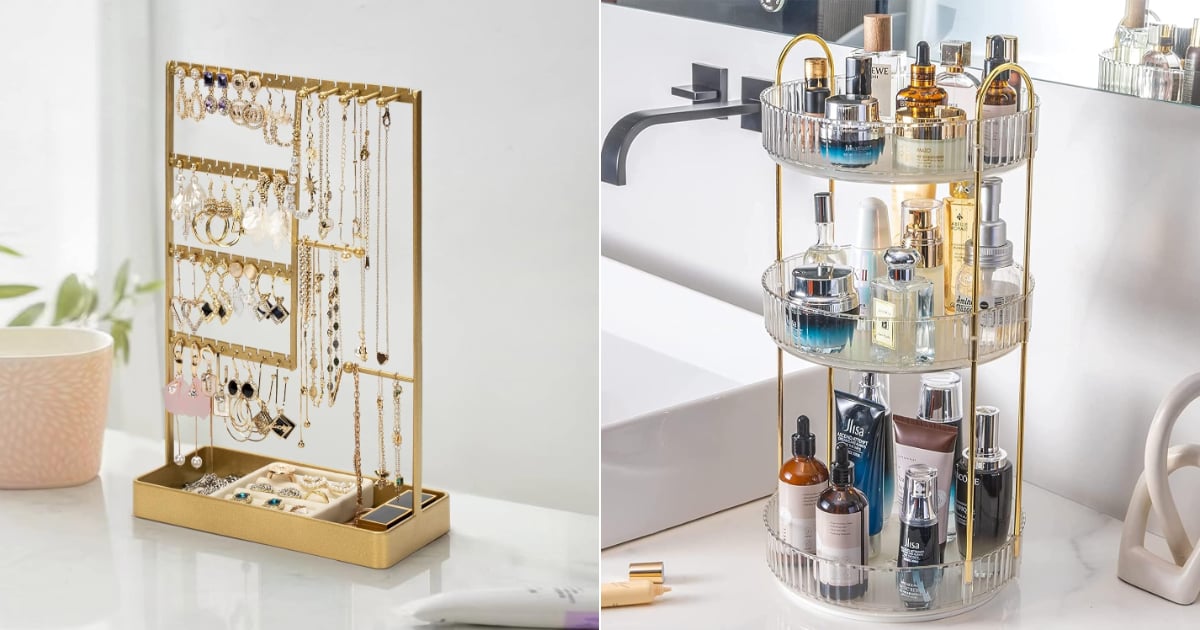NEW YORK — During October’s New York Bridal Fashion Week, editors and buyers were invited to preview bridal label Amsale’s latest wedding dress collection within the walls of its new SoHo flagship. This month, the brand quietly opened the doors to its 150 Wooster location, after relocating from its uptown Madison Avenue flagship, which opened in 1996.
Founded by the late Ethiopian designer and creative director Amsale Aberra in 1985, the bridal brand has become globally recognized for Aberra’s simple, clean and architectural designs. Following Aberra’s passing in 2018, Amsale is today helmed by Neil Brown, Aberra’s husband and chief executive officer; Rachel Brown, daughter and director of arts and legacy, and creative duo Sarah Swann, chief creative officer, and Michael Cho, head designer for bridal and eveningwear, who lead the brand’s original atelier team.

With 30-plus years in business, the brand has overcome hurdles (including the COVID-19 pandemic, which shut down a majority of the bridal business), but is rebuilding itself for the modern bride with Aberra’s couture craft, vision and legacy at the forefront.
Amsale is projecting sales will reach $30 million at retail this upcoming year, with non-bridal up about 30 percent from zero in less than two years, Brown told WWD, adding that the flagship relocation from Madison Avenue to SoHo signals this growth across its bridal and non-bridal businesses.
“We really felt that SoHo would be the ideal space because that would be where the customer that connected with our aesthetic would likely be shopping. We felt that they probably migrated from Madison Avenue from the days when we started back then. We saw this space in April and it immediately struck us as perfect,” Brown said.
The flagship is “really the culmination of a vision that’s been forming, that certainly was part of Amsale’s vision before she passed, and that we felt an obligation to bring to life, which you can imagine was no picnic both after losing her and in the process of rebuilding, having dealt with the pandemic, which shut our industry down for close to two years.”

The goal of the new flagship was to create a space that supported Amsale’s expansion between bridal and non-bridal, while serving personalized experiences to brides, bridal parties and non-brides in every aspect.
To bring their vision to life, the brand tapped architect Reza Nouranian of New York City-based architecture, planning and interior design firm Reza Nouranian Design (who’s recent well-known projects include Nine Orchard).
“What so connected us was seeing [Nouranian] integrate different styles, cultures, ages, which was just like Amsale. Eclectic pieces from around the world from different time periods; pieces where every item is sort of a work of art. Every item means something or has a story. We could see that at Nine Orchard,” Brown said.
Within her role as director of arts and legacy, Rachel Brown is responsible for overseeing Amsale’s legacy, vision and values across every aspect of the brand. “Even though I don’t have a background in design, I inherently understood my mom and my mom’s design. I got really lucky I had that guidance coming from her. My purpose has been to just kind of look at things and think, ‘Would that still be Amsale,’ and understand that we’re in a different time. I’m kind of the demographic that is relevant to what we’re doing, and I hope that I have her voice in me to be able to say that this is what she would do now,” she said.

Nouranian said it was also about “making the space feel not only refined, but also approachable,” while “programmatically” addressing the aspects the Amsale flagship needed to address: eveningwear, wedding dresses, bridesmaid fashions and alterations (as well as a back office and storage).
Upon walking into the flagship, guests are greeted by a living room-inspired space that houses the brand’s evolving eveningwear alongside globally sourced furnishings such as a pair of Art Deco Sycamore chairs with parchment top-side tables from Dorian Caffort de Faws Antiques in London; a sixfold 1940s Parisian nickel plated screen with amboyna wood; a 1960 Dyrlund Denmark armchair; a 1930s Japanese desk lamp; ceramic vases by Shane Gabier; a Nana Lure chandelier by Brooklyn-based Pelle; a hanging sculpture by New York artist Shari Mendelson commissioned for the original Amsale flagship, and more.
The room leads to a long hallway with archival Amsale framed photographs lining the right wall; along the left side sits the brand’s large bridesmaid suite, featuring a private room with adjoining dressing rooms. Throughout the space, each of the dressing rooms is outfitted with custom-made furnishings and hand-rolled, -painted and -stenciled walls.
Following the hallway and bridesmaids suite is the brand’s open-concept bridal room and adjoining private dressing rooms with custom caddies and vintage sterling vanity mirrors for Amsale stylists to utilize during appointments. Behind these spaces sit the elevator and back offices, with an open basement floor designed to cater to future brand events (i.e., intimate runway shows with its stadium-inspired seating) with an alterations studio and garment racks filled with the brand’s Little White Dress offering.

Although Neil Brown said customers are excited to return in-store following the pandemic, the brand attributes part of its growth during COVID-19 to online sales via the reintroduction of its Little White Dress bridal occasion line, which retails from $396 to $895, as well as its recent expansion of its non-bridal evening and cocktail collections.
“We felt we were especially capable of serving the entire wedding party, and all the guests — everyone associated with these events. Part of the process was also building the tools — both the best physical staff, the online staff and the digital tools to support the planning of an entire event,” Brown said. Via its e-commerce, the brand offers custom programming to help clients manage all of their event dressing and in-store, the brand trains associates on a weekly basis to continue to enhance their services.
Amsale’s evening and cocktail collections debut twice a year, with refreshed colors and fabrications dropping throughout. Currently Swann noted that the brand is working on “involving inventory where we can” to offer more in-store, buy-now options.
In addition, the brand travels around the U.S. for trunk shows and works with retail partners such as Saks Fifth Avenue (and Saks.com), Nordstrom and Bloomingdale’s to offer custom colorways and styles.
In the future, the company is planning to increase the ability to work closely with retailers through a “partner program” that will allow national Amsale stockists access to the brand’s online platform for appropriate inventory.

“Amsale has been an important partner for Saks for over 30 years. Amsale’s unique aesthetic and innovative designs put her namesake label at the forefront of the bridal industry, and it has been incredible to see her legacy live on through the brand as it continues to evolve and expand new into categories. We look forward to seeing Amsale continue to grow at Saks and beyond,” Tracy Margolies, Saks’ chief merchandising officer, told WWD.
Global expansion was also noted as an exciting area for the brand, which is “doing particularly well in Japan,” Brown said, with primary retailers Treate Dressing and Juno. To accelerate its global reach (especially in Europe and the Middle East), the brand recently hired Laura Stephen, formerly vice president of wholesale at Versace, as head of the Amsale wholesale division.
Currently, bridal (including Amsale Bridal, Nouvelle Amsale Bridal, Amsale Little White Dress and Amsale Bridesmaids, priced overall from $275 to $12,000 — not including bespoke and custom styles) makes up about 60 to 65 percent of the business, with non-bridal (priced $500 to $6,000) being about 30 to 35 percent.

Speaking about the evolution of design, Swann said the SoHo space is giving her team inspiration to expand all collections. “Design is super exciting right now because there are no boundaries for us. The dresses that we’re really pushing in terms of statement I think are attracting people to the brand. It might not necessarily be what they purchase, but it gets them in the door, like the Orchid gown from this season or the Rosemary gown from the previous. Those gowns are like, ‘Wow, I want to go and see what that brand can do and what it can offer.’ That’s our general design approach — what are those things that get people talking and what is this collection of the ultimate Amsale gowns that represent the full collection,” she said.
In addition to fully bespoke and the bridal lines, Swann noted the importance of the “Amsale x You” program, which allows brides-to-be and bridesmaids to collaborate with the Amsale team to create their own dress based on digitized silhouettes, styles and fabrics from its archive (starting at $4,850).
“In Amsale’s honor, we digitized every pattern from Amsale since the company started. We digitized and selected some of the ultimate Amsale gown possibilities. So you can select the bodice, skirt — there’s thousands of options we’ve created. We initially tried to launch this online, but it’s more of an in-store experience. You work with a stylist, select the bodice, skirt and fabric and we deliver the whole gown finished. As we’re developing the in-store experience, we’re trying to build it out downstairs with all the bodices and skirts. We’ve got a kind of a very focused collection right now, but this is something as people get to know about it and as the stylists understand what a bride wants, they can really build their own gown in a couture way,” she said.



